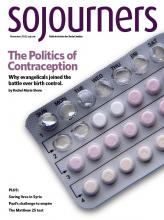THIS YEAR MARKS the 50th anniversary of the Vatican II document Nostra Aetate, the 1965 proclamation on “the relation of the church with non-Christian religions.” I want to celebrate a great theologian whose life intersects with that moment and whose work exemplifies its ethic.
Paul Knitter grew up in a strong working-class Catholic family on the South Side of Chicago and felt the call to the priesthood in his early teens. After four years of seminary high school and two years of additional novitiate training, he joined the Divine Word Missionaries (or SVD), an order whose main work was bringing non-Catholics into the Catholic faith. His regular prayers included the line “May the darkness of sin and the night of heathenism vanish before the light of the Word and the Spirit of grace.”
Reflecting back on this practice in his book One World, Many Religions, Knitter writes: “We had the Word and Spirit; they had sin and heathenism. We were the loving doctors; they were the suffering patients.”
Knitter’s journey took a number of unexpected turns. As he sat with the other seminarians listening to the stories of returned SVD missionaries, he discovered that he was fascinated by the slide shows of Hindu rituals and Buddhist ceremonies. He even detected a hint of admiration in the voices of older SVD priests as they described the elaborate non-Christian religious systems that they encountered on their missions. One brought in an Indian dance group and explained that their performance was developed in a Hindu context but had been adapted to glorify Jesus. Knitter was entranced by the intricacy of the movements, and he found himself wondering whether “sin and heathenism” were the correct terms for a tradition that could inspire such beauty.
Read the Full Article

